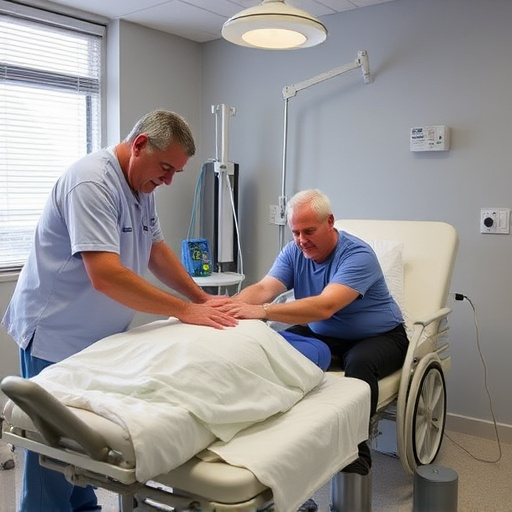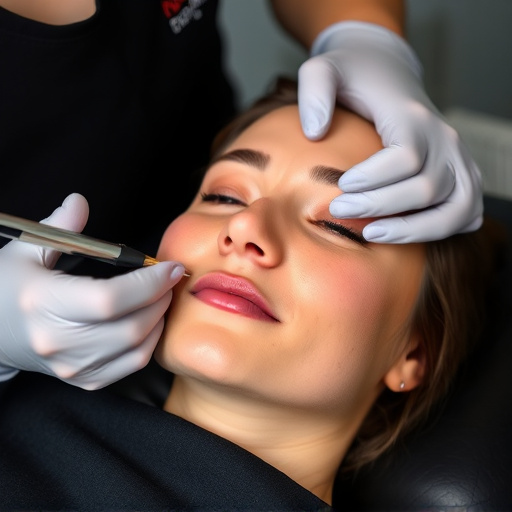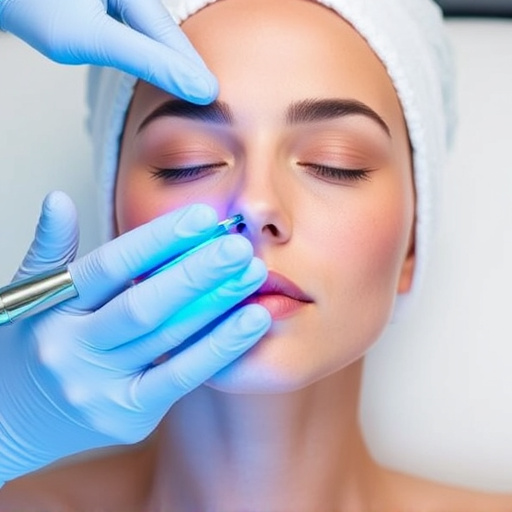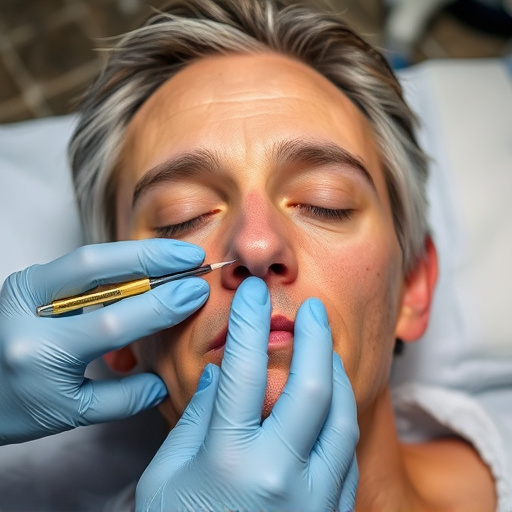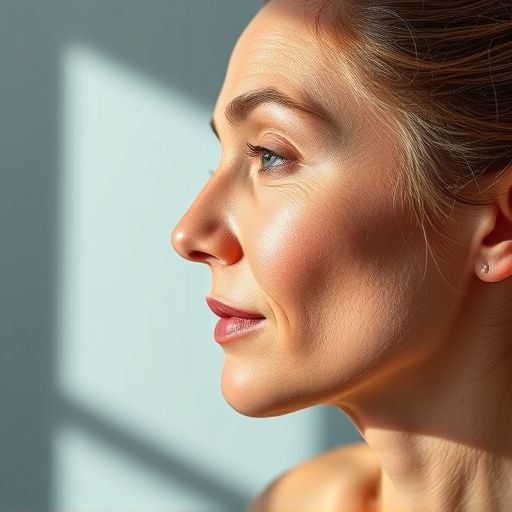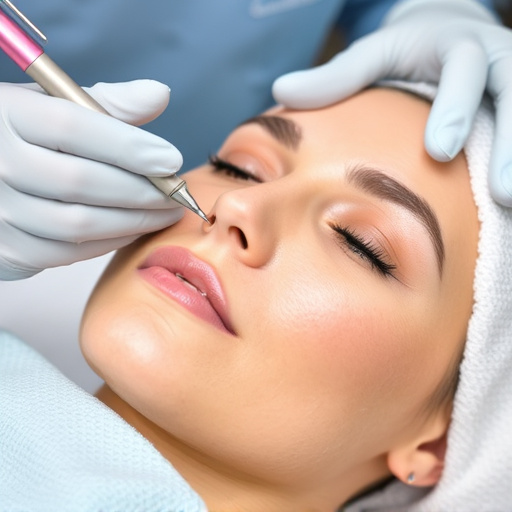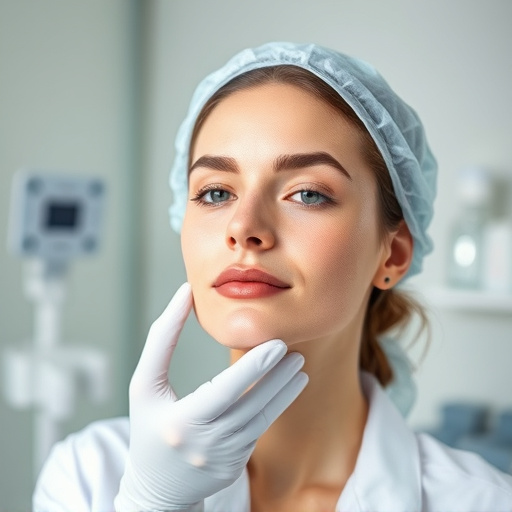Cystic acne, a complex skin condition causing deep inflammation and painful cysts, significantly impacts self-esteem. Effective treatment involves understanding its causes—hormonal fluctuations, genetic predisposition, and bacterial growth—and adopting a comprehensive strategy. This includes medical treatments, skincare routines, procedures like hydrating facials, and body contouring for severe cases. Personalized plans feature topical treatments, light therapy, chemical peels, and pore refinement to reduce inflammation and unclog pores. Holistic approaches like dietary changes, exercise, stress management, and adequate sleep support long-term skin health alongside professional care. Regular dermatologist consultations ensure the treatment plan remains effective and adapted to individual needs.
Cystic acne, characterized by deep, painful lumps, can persist for years, impacting self-esteem. Understanding its causes, encompassing both hormonal and bacterial factors, is key to effective long-term treatment. This article delves into the essential components of a successful strategy, from medical interventions like antibiotics and retinoids to lifestyle modifications that foster skin health. By exploring these multifaceted approaches, individuals battling cystic acne can achieve sustained clear skin and improved quality of life.
- Understanding Cystic Acne: Causes and Impact
- Key Components for Long-Term Effective Treatment
- Lifestyle Changes and Supportive Care for Sustained Results
Understanding Cystic Acne: Causes and Impact
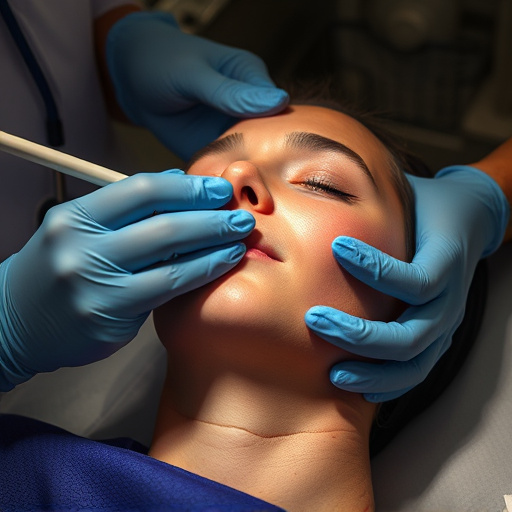
Cystic acne is a severe form of acne that goes beyond surface-level blemishes. It’s characterized by deep-seated inflammation leading to painful cysts and nodules, often appearing as large, red lumps beneath the skin. This type of acne isn’t just about aesthetics; it can have a significant impact on an individual’s self-esteem and overall well-being. The causes are multifaceted, including hormonal fluctuations, genetic predisposition, and excessive oil production. These factors create an environment where bacteria, like Propionibacterium acnes (P. acnes), thrive, causing inflammation and damage to skin tissues.
The impact of cystic acne extends beyond physical scars. It can lead to emotional distress, low self-confidence, and even social isolation. Understanding these causes and the subsequent effects is crucial when considering effective cystic acne treatment. While over-the-counter remedies might offer temporary relief, addressing the root causes requires a more comprehensive approach, including medical treatments, skincare routines, and sometimes, procedures like hydrating facials or skin rejuvenation techniques to enhance healing and minimize scarring. Even body contouring treatments can be explored for severe cases where cysts have led to significant physical changes.
Key Components for Long-Term Effective Treatment
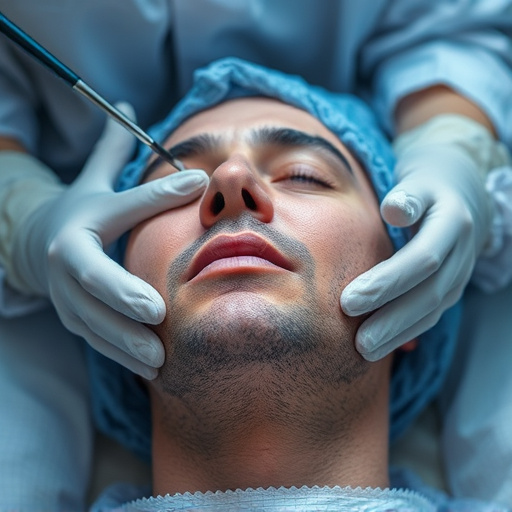
For cystic acne treatment to be effective long-term, it must address the root causes and involve a multifaceted approach. Key components include personalized skincare plans tailored to the individual’s skin type and severity. These plans should incorporate non-surgical treatments such as topical medications, targeted light therapy, and chemical peels to reduce inflammation and unclog pores.
Additionally, procedures like pore refinement can help minimize the appearance of enlarged pores, preventing future breakouts. Combining these strategies with consistent, thorough cleansing and a healthy lifestyle promotes long-lasting results. Regular check-ins with dermatologists ensure adjustments to the treatment plan as needed, fostering ongoing skin health and clarity.
Lifestyle Changes and Supportive Care for Sustained Results
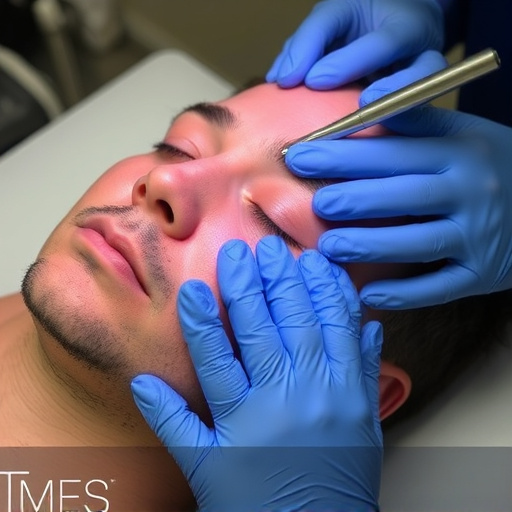
For cystic acne treatment to be effective long-term, lifestyle changes and supportive care are integral components. Beyond topical medications and professional procedures like laser hair removal, adopting a holistic approach can significantly enhance results. This includes maintaining a balanced diet rich in antioxidants and essential nutrients, as well as staying hydrated to support skin health from within. Regular exercise promotes blood circulation, which helps flush out toxins and keeps the skin clear. Additionally, managing stress levels through techniques like meditation or yoga can mitigate hormonal fluctuations that contribute to cystic acne.
Supportive care also involves prioritizing adequate sleep, as it allows the body to repair and regenerate skin cells naturally. Avoiding excessive sun exposure and using sunscreen year-round helps prevent further damage and supports overall skin health. Incorporating gentle, non-irritating skincare products can soothe the skin and reduce inflammation without exacerbating cystic acne. Moreover, regular consultations with a dermatologist ensure ongoing monitoring and adjustments to treatment plans as needed, ensuring sustained results over time.
Cystic acne treatment involves a multifaceted approach that combines medical expertise with lifestyle adjustments. By addressing the key components such as targeted medications, regular skin care routines, and dietary modifications, individuals can achieve long-term relief. Integrating supportive care practices further enhances the effectiveness of cystic acne treatment, promoting sustained clear skin and improved quality of life. Embracing these strategies equips folks to effectively navigate their journey towards a clearer, healthier complexion.
